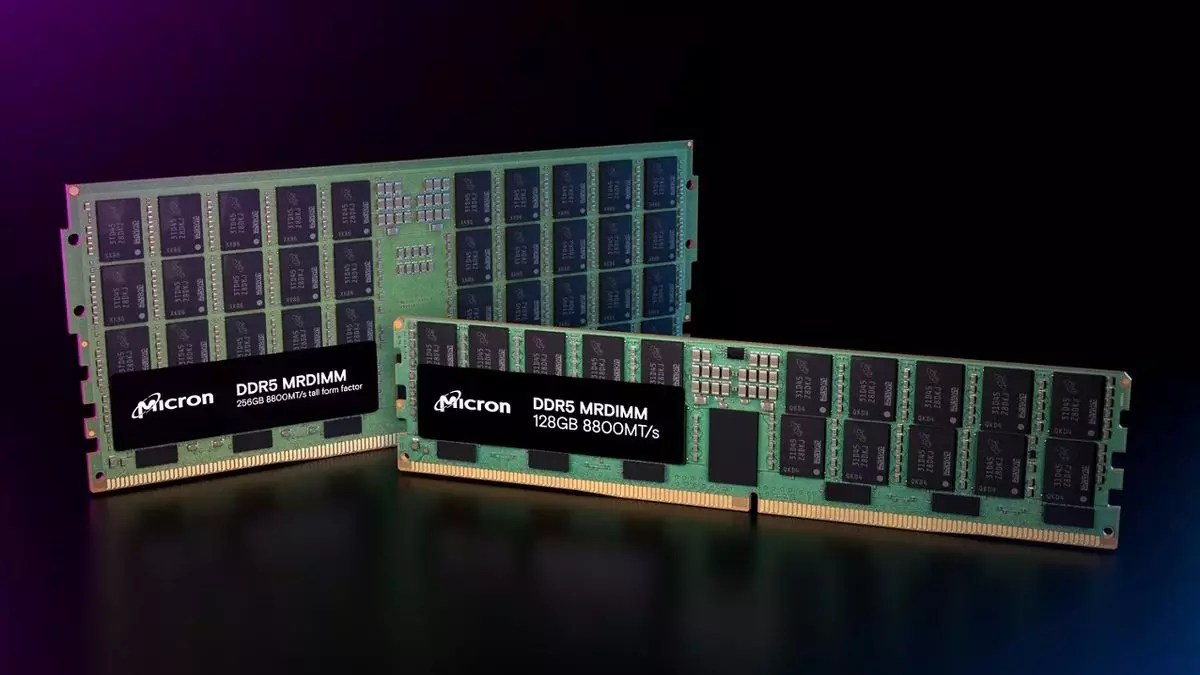MRDIMM, short for Multi-Ranked buffered DIMM, is a groundbreaking memory technology backed by AMD and JEDEC. Unlike traditional RAM sticks, MRDIMM offers monstrously wide bandwidth, high capacity, and cost-effectiveness. Servers commonly utilize RDIMMs (Registered DIMMs) for enhanced reliability, making MRDIMM a significant upgrade for memory-intensive workloads.
One of the key features of MRDIMM is the incorporation of multiple ranks of DRAM on a single DIMM module. This design allows for increased memory bandwidth, essential for handling complex AI workloads. While stacking DRAM via TSVs can also enhance bandwidth, it comes at a higher cost. MRDIMM’s ability to boost performance without breaking the bank makes it a compelling choice for server deployments.
Micron’s MRDIMM modules are capable of running at speeds up to 8,800 MT/s with capacities reaching up to 256 GB. By combining transfers from multiple DRAM ranks, MRDIMM effectively doubles the bandwidth compared to single-rank configurations. While this approach introduces a slight latency, the overall performance gains outweigh the trade-off, making MRDIMM a promising solution for data centers.
The development of MRDIMM builds upon earlier collaborations between industry leaders. Intel, SK Hynix, and Renesas worked on MCR DIMMs for Intel servers, while JEDEC partnered with AMD to establish the DDR5 MRDIMM standard. Micron’s introduction of MRDIMM modules signifies a significant milestone in advancing memory technology for server environments.
Although Micron’s MRDIMM modules are currently compatible with Intel Xeon 6 server processors, the open standard nature of MRDIMM suggests wider compatibility across server platforms. As AMD integrates MRDIMM into its Epyc servers, we can anticipate broader adoption and further innovation in memory technology. While these advancements may not directly benefit consumer gamers, they signal a promising future for memory form factors.
As MRDIMM paves the way for enhanced memory capabilities in server environments, other form factors like CAMM2 are also on the horizon. While consumer gamers may not have immediate access to multi-rank DIMMs, the ongoing developments in memory technology promise exciting possibilities for enhancing performance and efficiency in a wide range of applications. The evolution of MRDIMM represents a significant step forward in addressing the growing demands of modern computing environments.


Leave a Reply